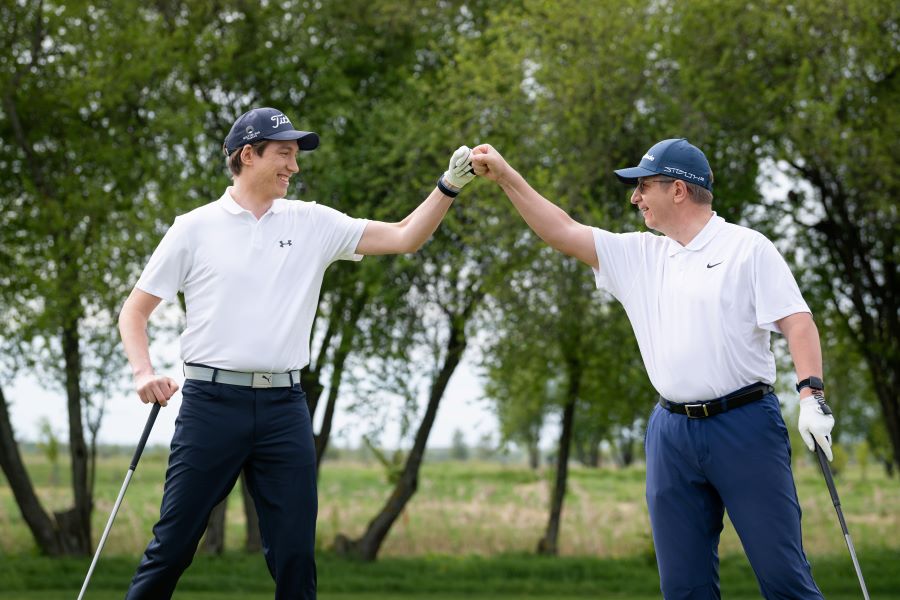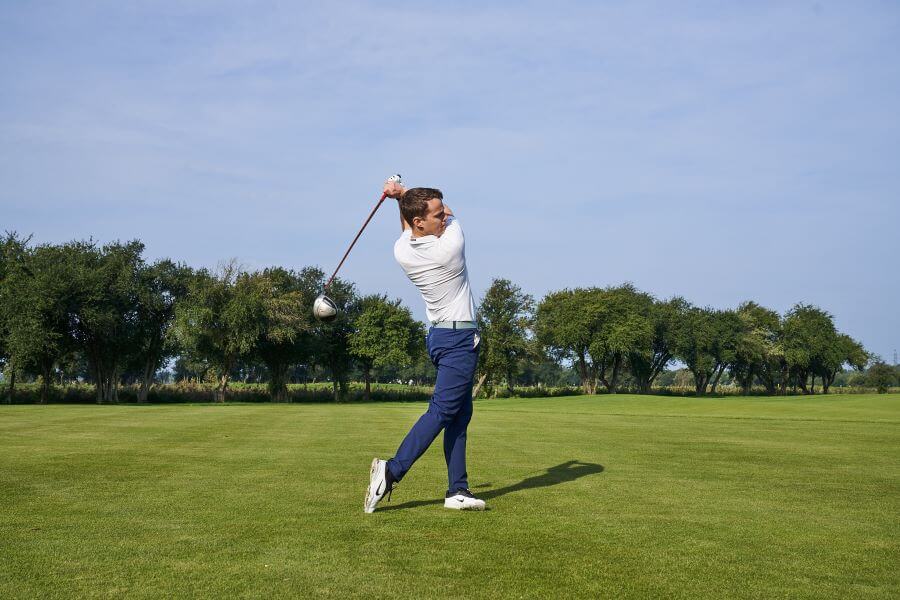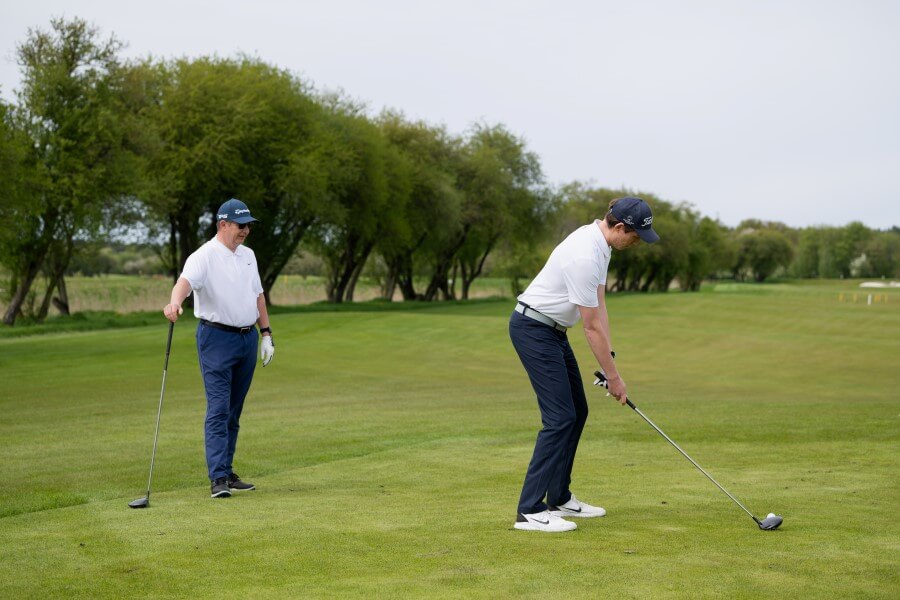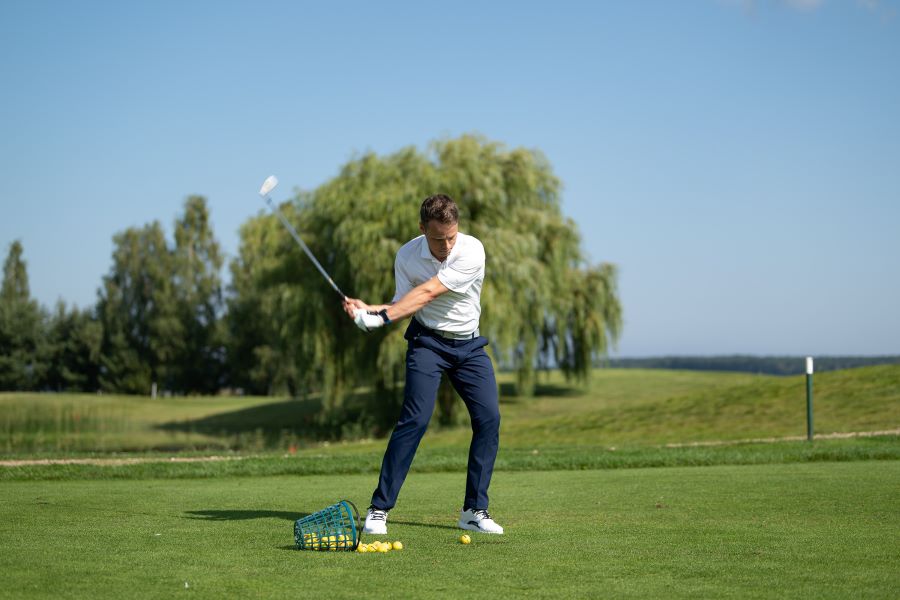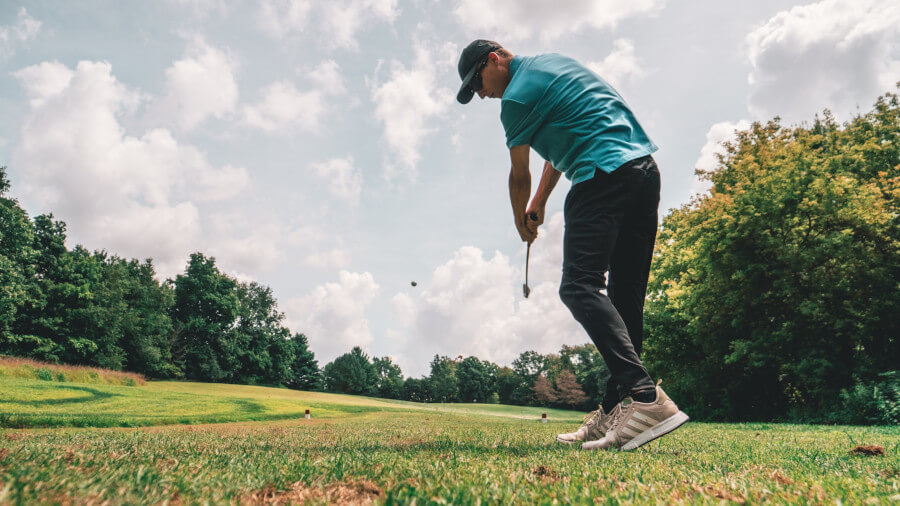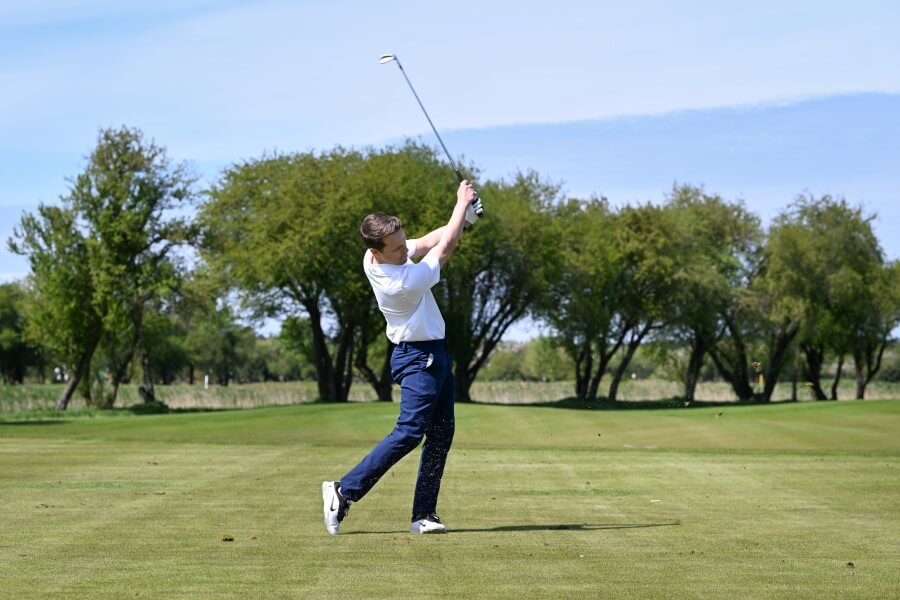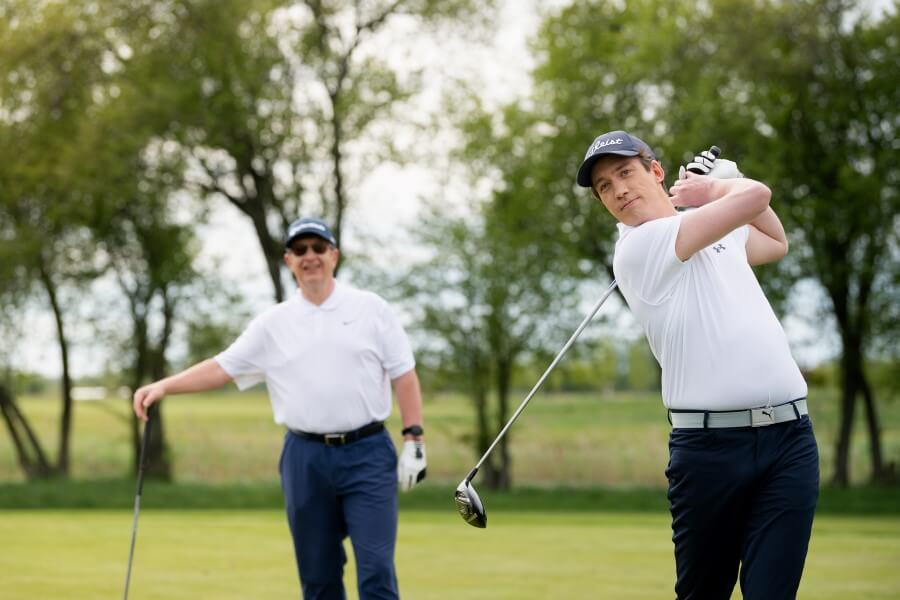Drive Like a Pro: 20 Game-Changing Golf Driving Tips for Longer, Better Drives
Hitting the driver solid and long is at the top of the list of things golfers want to accomplish. There is just something about cracking a long drive off the tee that gets you fired up.
The key is to use that fired-up attitude to hit the ball long and straight instead of causing you to hit it left or right.
We’ve put together some of the best driving tips in the game; if you want to hit longer and better drives, this list will give you everything you need to get it done.
Key Takeaways
There is a lot of information here about how to hit a golf driver; if you want to come back to it later and just walk away with the most important tips for now, here they are:
- To hit great shots with the driver, you need a combination of the proper club head speed, swing mechanics, and mental mindset.
- Because of its length, the driver is slightly harder to hit, making tempo, timing, and rhythm even more important.
- Wrist extension at the top of the backswing is a major cause for a golfer’s slice; working on decreasing wrist extension will help square the clubface at impact.
- Playing with proper golf equipment is essential, but to get the most benefit, focus on shaft specifics.
Contents
- 20 Actionable Golf Driving Tips for Longer and Better Drives
- Don’t Give Up Your Speed from the Tee
- Hit the Ball in the Center for More Distance
- Correct the Extension in Wrists at the Top of Your Backswing
- Learn to Rotate the Wrists and Forearms to Release
- Spend a Little Time in the Gym
- How Low Can You Go? Learn to Get Flexible
- Invest in Speed Training
- Choose a Shaft that Works for Your Game
- Consider Kick Point to Improve Ball Flight
- Use Adjustability to Benefit You
- Play with a Golf Ball that Matches Your Swing
- Tee it High! How Tee Height Influences Drives
- Place Feet Slightly Wider with a Little Foot Flare
- Grip it Correctly (Maybe a Little Strong)
- Grip Pressure a Little Stronger Than You Think
- Get Wide in the Backswing
- Rhythm and Tempo are Critical – Even with Extra Speed
- Proper Sequencing from the Top and Down
- Use the Ground and Your Feet
- Hold the Finish
- In Summary
20 Actionable Golf Driving Tips for Longer and Better Drives
Don’t Give Up Your Speed from the Tee
One of the worst pieces of advice in golf? “Just slow down.”
Yes, tempo matters, but speed is how you gain distance. With a driver in your hands, you need as much distance as you can get.
Here’s what you need to know:
- Clubhead Speed = how fast the club is moving just before impact (mph).
- Ball Speed = how fast the ball is traveling immediately after impact (mph).
- Smash Factor = efficiency of your strike (Ball Speed ÷ Clubhead Speed) 100 mph clubhead speed + 150 mph ball speed = 1.50 Smash Factor (ideal).
Key takeaway:
Don’t just swing harder, swing smarter. Work toward a 1.50 smash factor to maximize your energy transfer. Each 1 mph of ball speed adds about 2 yards of carry.
Hit the Ball in the Center for More Distance
Swing speed gets most of the attention, but hitting the center of the clubface is just as important for maximizing ball speed.
You can add distance even without swinging any faster by consistently striking the sweet spot.
Off-center hits reduce your smash factor and lead to slower ball speeds, which means shorter drives.
To get the most out of your swing, look for a driver with a generous sweet spot and focus on repeating a consistent, balanced swing every time.
Correct the Extension in Wrists at the Top of Your Backswing
Your hands are the only connection to the club, and your wrists play a huge role in controlling the clubface.
If your lead wrist is flat at the top of the backswing, it’s much easier to square the face at impact.
But if extended, the face often stays open, leading to weak fades or slices.
That’s why understanding wrist movements and training them properly can make a big difference in distance and accuracy.
Here are the key wrist movements to understand:
- Wrist Extension: Back of the hand moves toward the top of your forearm.
- Wrist Flexion: Palm moves toward the underside of your forearm.
- Radial Deviation: Wrist bends upward toward the thumb side.
- Ulnar Deviation: Wrist bends downward toward the pinky side.

HackMotion is the best tool for mastering these angles.
It measures your wrist positions, shows how they compare to Tour averages, and gives you instant feedback through sound and visuals.
The HackMotion app is continually being updated with drills and exercises to help you improve.
Learn to Rotate the Wrists and Forearms to Release
Squaring the face at the top is only half the battle; you must rotate and release properly through impact.
As you move from the top of the backswing into the downswing, the lead wrist gradually shifts from extended to a more flexed position at impact. This change helps square the face and create solid contact. Meanwhile, both wrists begin to rotate to match the target line.
You may release too late if you struggle with slices or weak contact. Use HackMotion to track your wrist rotation in real time. It’s the best way to train proper timing and face control through impact.
One of the best ways to practice this is with the HackMotion Release Drill:
Perfect Your Release with HackMotion
Train your wrist release in a short swing window, from club parallel to just past impact. If this part of your swing is clean, it becomes easier to build speed and consistency later.
HackMotion Release Drill – Step by Step
- Set Up with a short swing in mind — no full backswing.
- Swing to Impact starting from the club parallel position in the downswing.
- Hands Ahead at impact — feel the lead wrist flex and trail wrist extend.
- Check with HackMotion — make sure your wrist angles are “in range.”
- Do 10+ slow reps, then build up to full speed.
Spend a Little Time in the Gym
If you didn’t skip right past this section, I give you some credit. Golfers who are stronger ball drivers have better physical strength.
To become more powerful in golf, focus on a few key areas in your strength training.
- Core
- Glutes
- Hips
How Low Can You Go? Learn to Get Flexible
What goes hand in hand with strength training for better drives is working on your flexibility.
One area of the body where golfers often lack flexibility is the hips. You may feel this if you are trying to make a turn behind the ball and instead feel flat-footed and stuck in your ability to turn.
A lack of hip mobility can directly affect your ability to hit longer and straighter drives.
Invest in Speed Training
You can’t just walk up to a golf ball and swing out of your shoes, at least not if you want consistent results. As you build strength and flexibility, that’s the time to start layering in structured speed training.
Long drivers like Kyle Berkshire and 2022 World Long Drive champ Martin Borgmeier (who launched a 426-yard drive to win) have made speed training more mainstream, and even PGA Tour pros like Bryson DeChambeau have adopted their methods.
These athletes regularly share drills, gym routines, and swing techniques on social media that can help you learn how to swing faster, not just harder.
Choose a Shaft that Works for Your Game
It’s easy to get caught up in driver head designs, but the shaft might be even more important. While some call it the “engine of the swing,” the truth is you’re the engine, the shaft just needs to match how you swing.
The right shaft helps transfer energy efficiently from your swing to the clubhead and into the ball. But if it’s too stiff or too soft for your swing speed, that energy transfer breaks down and you lose distance, consistency, or both.
Too many golfers are using shafts that don’t fit their swing, holding them back.
Get fit, test different profiles, and make sure your shaft is helping you optimize every drive, not working against you.
| Swing Speed | Club | Clubhead Speed Range | Shaft Flex |
|---|---|---|---|
| Very Fast | Driver | >105 mph | X Stiff |
| Fast | Driver | 97-104 mph | Stiff |
| Average | Driver | 84-96 mph | Regular |
| Slow | Driver | 72-83 mph | Senior |
| Ladies | Driver | <72 mph | Ladies |
Consider Kick Point to Improve Ball Flight
Kick point refers to the part of the shaft that flexes most during the downswing, just before impact. It plays a major role in determining your ball flight:
- Low Kick Point (near the clubhead) = higher launch
- Mid Kick Point = balanced flight
- High Kick Point (near the grip) = lower launch
If your drives come off like line drives with no real height, your shaft’s kick point might be too high. Switching to a lower kick point could help you launch the ball higher with less effort.
The best way to find the right kick point and the right shaft overall is to get professionally fit. It’s one of the smartest gear decisions you can make for your game.
Use Adjustability to Benefit You
If you’ve bought a driver in the past few years, chances are it’s adjustable.
A simple loft tweak could help you hit it higher, straighter, and longer. Many golfers are playing lofts that don’t match their launch angle or spin needs, leaving easy distance and control on the table.
Adjusting your driver can lead to game-changing results without buying new gear.
Here’s how changing loft can help:
- Increase loft (e.g., 9.5° – 11°): Higher launch, more carry, added forgiveness.
- Decrease loft: Lower launch, lower spin, more roll (if you’re ballooning shots).
- Adjusting face angle: Upright/closed settings can help fight a slice.
Play with a Golf Ball that Matches Your Swing
The ball is another piece of equipment to help you hit straighter and longer drives.
Golf balls are made in different ways and for different reasons. A lower spin golf ball tends to make sense if you are looking for more distance off the driver.
The problem with a low spin ball is that it won’t give you as much control around the greens. Play around with different choices and see what helps your game the most.
Tee it High! How Tee Height Influences Drives
Let’s move on from this idea that a low piercing ball flight will help you obtain more distance on the golf course.
It won’t.
Tee height definitely affects how a golf ball launches and, ultimately, the distance it goes. Tee the ball about half a ball above the top of the driver head and see how it increases your driver distance.
Place Feet Slightly Wider with a Little Foot Flare
A proper setup is the foundation of a great drive. With the driver, your stance should be slightly wider than shoulder width to support a bigger swing arc.
Flare both feet out a little, especially the lead foot, to make it easier to rotate back and through.
Driver Setup Checkpoints:
- Stance Width: Half step past shoulder width.
- Foot Flare: Slight flare on both feet; lead foot flared more.
- Ball Position: At or just past the lead heel.
- Primary Spine Angle: 35–45° forward bend.
- Secondary Spine Tilt: Slight lean away from the target for optimal launch.
Grip it Correctly (Maybe a Little Strong)
A slightly stronger grip can help you add distance and promote a draw by making it easier to square or even close the clubface at impact.
If you tend to slice the ball, turning your lead hand to the right (for right-handed golfers) is a smart adjustment.
Just make sure both hands work together, the “V” formed by your thumb and forefinger on each hand should point toward your trail shoulder.
Use HackMotion to check wrist angles in your setup and make sure your grip is consistent from swing to swing.
Stronger Grip Checkpoints:
- Turn lead hand slightly right (toward trail shoulder).
- Match both “V’s” to point over your trail shoulder.
Grip Pressure a Little Stronger Than You Think
Grip pressure is a big deal. Too tight, and you create tension through your arms and shoulders, limiting speed and fluidity. Too loose, and the club can shift in your hands, leading to an inconsistent clubface at impact.
Aim for a firm but relaxed grip, secure enough to stay in control without locking up your upper body.
Also, watch your pressure during the transition; many golfers unknowingly tighten up as they start the downswing.
Get Wide in the Backswing
To get the most out of your driver, focus on creating width in your backswing.
At the halfway point, your arms should be fully extended, with your hands moving away from your chest, all while keeping your upper body centered over the ball. As you hinge your wrists and move to the top, maintain that width without swaying off the ball.
Use HackMotion’s audio feedback to ensure your added width still results in a solid top position, with a flat lead wrist and a smooth transition into impact. The goal is more width without sacrificing control.
Rhythm and Tempo are Critical – Even with Extra Speed
Rhythm in the golf swing is the ratio of your backswing to downswing speed. Some pros look smooth and slow, while others swing aggressively, yet both can have the same tempo.
A common target for driver rhythm is a 3:1 ratio, meaning the backswing takes three times as long as the downswing. Experiment with this to find a natural tempo that helps you stay in sync.
Just remember: rhythm only works if you’re balanced. If you’re losing balance, your tempo likely needs adjusting.
Proper Sequencing from the Top and Down
Having a bad tempo can create sequencing problems. Sequencing is the order in which parts of the body follow each other throughout the swing.
Those who are too quick from the top in their transition down can cause issues with the sequence.
Proper sequencing from the top down starts with the hips and not the hands. Moving too fast with the hands can create many issues.
The HackMotion Casting Drill can help you work on your sequencing:
Fix Your Casting with HackMotion
Train to fix casting by generating power with your core and lower body.
HackMotion Casting Drill – Step by Step:
- Slow Rehearsals: Make a normal backswing, then begin the downswing by shifting your weight left and rotating your hips. Focus on not pulling down with your arms.
- Maintain Trail Wrist Bend: Check your HackMotion trail wrist data. Keep the trail wrist extended (bent) as you initiate the downswing, avoiding an early “throw” of the club.
- Arms Follow: Let the arms drop naturally; the club should “lag” behind your hands. This maintains stored power and prevents an over-the-top cast.
- Progressive Speed: Start slowly, gradually building up speed in your downswing. Keep monitoring your wrist angles, looking for late release (not early cast).
HackMotion Tip: If your trail wrist extension “straightens” too soon in the downswing graph, you’re casting.
Use the Ground and Your Feet
Your feet are your only link to the ground, and they play a critical role in creating a stable, powerful swing. Good footwork helps you stay balanced, rotate efficiently, and generate power from the ground up.
From the takeaway to the top, and through impact and finish, your feet support the motion and help control your swing’s rhythm and energy.
For a timeless example of this in action, check out this classic footwork lesson from Jack Nicklaus, which is still relevant today.
Hold the Finish
One of the best swing thoughts you can have is to hold your finish.
If you picture a balanced finish with your chest and core facing the target before you even swing, you’re far more likely to move through the ball with purpose.
Since the swing happens in just over a second, that end position can anchor everything that happens before it.
In Summary
Hitting long and solid drives starts with understanding how speed is created in a swing and how our body and equipment play a role.
From there, you can start working on improving your fundamentals, starting in the pre-swing and continuing through the moving parts of the swing.
Use tools like HackMotion to make this process more enjoyable and effective.





